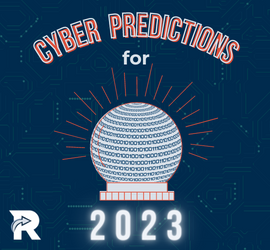
Threat actors are constantly evolving and changing their tactics, and cyber security efforts must evolve and change with them to ensure secure protection. In order to do this, companies must stay informed of future predictions for cyber-crime.
“The new reality is that most critical infrastructures operate in a digital environment that is internet accessible. The trends of integration of hardware and software combined with growing networked sensors are redefining the surface attack opportunities for hackers across all digital infrastructures.” (Forbes).
This opens the door for cyber-attacks such as ransomware, however, not all industries will be targeted, and some are more vulnerable than others.
“Cyber criminals look for organizations or industries teetering at the edge and then make their move to tip them over. Last year, we saw that with manufacturing — a strained industry viewed as the backbone of supply chains. With the distinct possibility of a global recession on the horizon, we expect to see ransomware attacks spike in 2023. However, larger organizations in regions heavily impacted during the ransomware boom are the most prepared for this wave after investing time and money in fighting back.” (Security Intelligence).
For 2023, regardless of industry, the more prepared one is for a cyber-attack, the less likely one will occur. Iron cyber defense creates less of a target for cyber criminals.
“Cyber-attackers will always look for the weakest point of entry and mitigating third-party risk is critical for cybersecurity. Supply chain cyber-attacks can be perpetrated from nation-state adversaries, espionage operators, criminals, or hacktivists. Their goals are to breach contractors, systems, companies, and suppliers via the weakest links in the chain.” (Forbes).
Another cyber-attack forecasted to gain popularity amongst threat actors in 2023 is polymorphic malware.
“Polymorphic malware enabled by machine learning algorithms and eventually artificial intelligence. It could be used to bypass two-factor authentication and other authentication security measures. This type of malware is being shared more often by criminal hacking groups and could pose a genuine problem for businesses in 2023.” (Forbes).
In addition to ransomware and polymorphic malware, trends for 2023 include the expansion of IoT, more bots, AI and more will all have developments beyond their current uses.
“There are many other interesting trends to look out for in 2023. These trends will include the expansion of use of a Software Bill of Materials (SBOM), the integration of more 5G networks to bring down latency of data delivery, more Deep Fakes being used for fraud, low code for citizen coding, more computing at the edge, and the development of initial stages of the implementation of quantum technologies and algorithms. When all is said and done, 2023 will face a boiling concoction of new and old cyber-threats. It will be an especially challenging year for all those involved trying to protect their data and for geopolitical stability.” (Forbes).
Sources:
Security Intelligence. https://securityintelligence.com/articles/cybersecurity-trends-ibm-predictions-2023/




